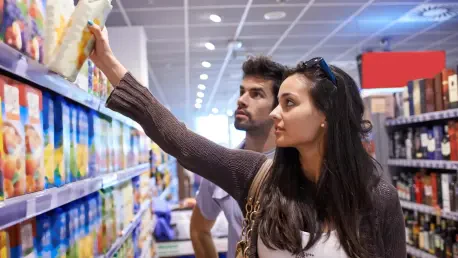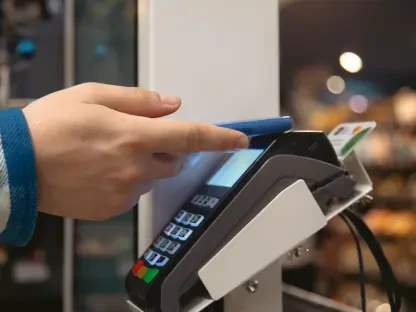In an ever-evolving marketplace defined by fluctuations in consumer habits, Zainab Hussain, an e-commerce strategist with extensive experience in customer engagement and operations management, sheds light on the current dynamics affecting consumer packaged goods (CPG) companies. Her insights draw from recent discussions at the Deutsche Bank conference and reflect the multifaceted challenges and responses seen across major brands.
Can you identify the main consumer trends that are currently impacting CPG companies, as outlined during the recent Deutsche Bank conference?
Today’s consumers are navigating a landscape characterized by economic and social disruptions, showing signs of stress yet resilience. Companies like Clorox and Mondelez have observed behaviors that highlight a marketplace driven by caution and value-driven decision-making. Shoppers are focusing on essentials and being strategic about their purchases, often opting for either larger savings in bulk or smaller sizes to manage costs.
How are consumers demonstrating value-driven decision-making in their shopping habits according to Clorox and other major brands?
Consumers are increasingly strategic, emphasizing value in various ways. Clorox notes that some opt for larger sizes to achieve better cost-per-use, while others select smaller, more frequent purchases to manage out-of-pocket expenses. This has caused shifts in purchasing habits, with people buying more edibles and prioritizing pantry staples over non-essential items.
How is Ulta responding to the economic uncertainty and its effect on consumer spending on beauty products?
Ulta views beauty as an “affordable luxury,” a category that consumers still prioritize despite economic concerns. While consumers say they’re committed to beauty purchases, actual spending can vary. Therefore, Ulta is taking a conservative approach, carefully monitoring consumer attitudes and adjusting their market strategies accordingly to remain resilient amid uncertainties.
What factors did Mondelez International note as influencing low consumer confidence, particularly among lower-income shoppers?
Mondelez highlighted that consumer confidence, especially among lower-income demographics, is notably low. This cautious outlook leads consumers to adhere strictly to budgets, affecting spending on non-essentials and snack categories. They observed consumers gravitating towards necessities while being selective with discretionary spending.
Colgate-Palmolive mentioned “destocking” as part of consumer caution. Can you elaborate on this concept and its effects on retail inventory levels?
Destocking reflects a trend where consumers purchase in smaller quantities, opting for one item instead of multiple to reduce immediate financial outlay. This behavior impacts retailers, leading them to adjust inventory levels to align with this more measured demand and avoid excess stock.
Dollar General mentioned an increase in higher-income customer traffic. What strategies is Dollar General using to attract and retain these consumers?
Dollar General has effectively broadened their appeal by offering a mix of low prices, smaller pack sizes, and an expanded product assortment. This approach resonates with budget-conscious shoppers while attracting higher-income customers seeking value without sacrificing quality.
General Mills’ CEO reported historic lows in consumer sentiment. How is this stress impacting consumer spending at home?
While sentiment is low, General Mills finds that spending remains strong for home-based consumption occasions. Consumers are driven by the need for value and nostalgia, gravitating toward familiar brands and seeking comfort foods, alongside an increased interest in high-protein and bold-flavored options.
What does Procter & Gamble mean by “absolute superiority” and how is this guiding their market strategies?
Procter & Gamble’s “absolute superiority” strategy focuses on delivering products superior to alternatives in terms of formulation, design, and branding. They aim to unlock growth by leveraging consumer insights, particularly in underserved North American markets, seeing potential in untapped demand.
How does Costco balance uncertainty in consumer behavior with the demand for value, quality, and product newness?
Costco meets consumer demands by maintaining a focus on high-quality products at competitive prices, which remains consistent even amid economic fluctuations. Categories such as electronics and paper products have seen higher sales as they meet core consumer priorities of value and innovation.
What long-term effects of economic and social disruptions are influencing consumer behavior according to Coca-Cola?
Coca-Cola sees ongoing adjustments in consumer behavior due to past disruptions like COVID-19 and inflation. Despite this, they remain optimistic about new opportunities in emerging segments such as advanced hydration and tea, driven by innovative products aligned with evolving consumer preferences.
What is your forecast for the future of consumer behavior in the CPG industry?
I foresee continued emphasis on value and necessity as consumers navigate economic uncertainties. Brands that leverage data and maintain adaptability will thrive, especially those that innovate within emerging categories and tailor their offerings to evolving consumer needs.









